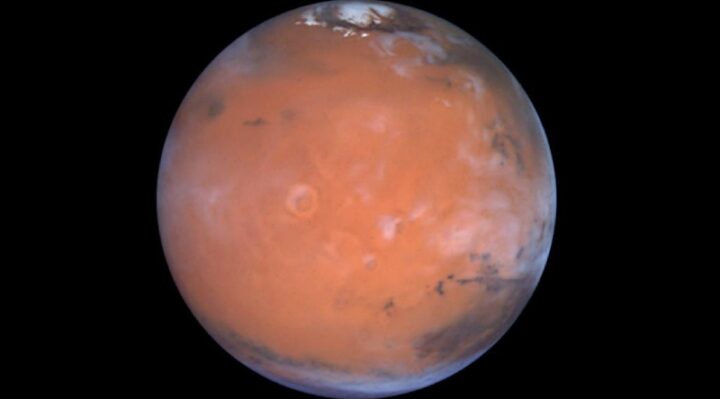Is there life on Mars? Ice water deposits discovered at the equator by the European Space Agency’s Orbiter


Researchers using Europe’s Mars Express Orbiter have discovered huge ice water reserves that are hidden beneath Mars’ surface. Based on data from the orbiter, the findings suggest that these deposits may be as thick as 3.7 kilometers, suggesting that Mars may have once hosted conditions favorable to life.
The projected volume of these deposits is enormous; if they collapsed, they could fill the Red Sea on Earth or cover the whole surface of Mars with a two-meter-deep layer of water.
Experts claim that this data indicates that Mars formerly had a very diverse the environment, complete with glaciers, lakes, and river channels.
Project scientist Colin Wilson of the European Space Agency (ESA) clarified, saying, “We’ve seen evidence of glaciers, some of which are covered in dust, and some of which are extinct and no longer exist.”
Most of the water ice that is now visible on Mars is found at higher latitudes, where the ice can be stable due to lower temperatures.
The fact that the ice water deposits were discovered at Mars’ equator rather than its poles contradict earlier theories. “We don’t expect to see a polar ice cap at the equator,” Wilson said. The data tell us that it does appear that way, even though it is just as ridiculous on Mars as it would be on Earth.
Scientists are excited about the unexpected discovery of the ice-water deposits, especially in light of possible future human exploration trips to Mars. Because of its advantageous orbital mechanics and greater power availability compared to polar locations, the equatorial location may make landings easier for exploration missions.
NASA’s Director of Planetary Science, Jim Green, emphasized the importance of the finding by saying, “We’re revolutionizing our understanding of this planet today.” Our rovers are discovering that the air is far more humid than we had anticipated.
These deposits were found in 2007 by the Mars Express orbiter, which first proved the existence of ice on Mars in 2004. Until recently, the composition was unknown, but the most recent research indicates that the deposits are made up of layers of ice and dust.
Wilson issued a warning that direct access to the layers of dust and ice is difficult due to a protection layer several hundred meters thick, even though there may be advantages for future exploration missions. He continued, “Unfortunately, this probably won’t be the solution to our needs for human exploration.”
Launched in June 2003, the Mars Express spacecraft has been examining the Red Planet for 20 years, gaining important knowledge about its geological past and the possibility of past life on the planet.


